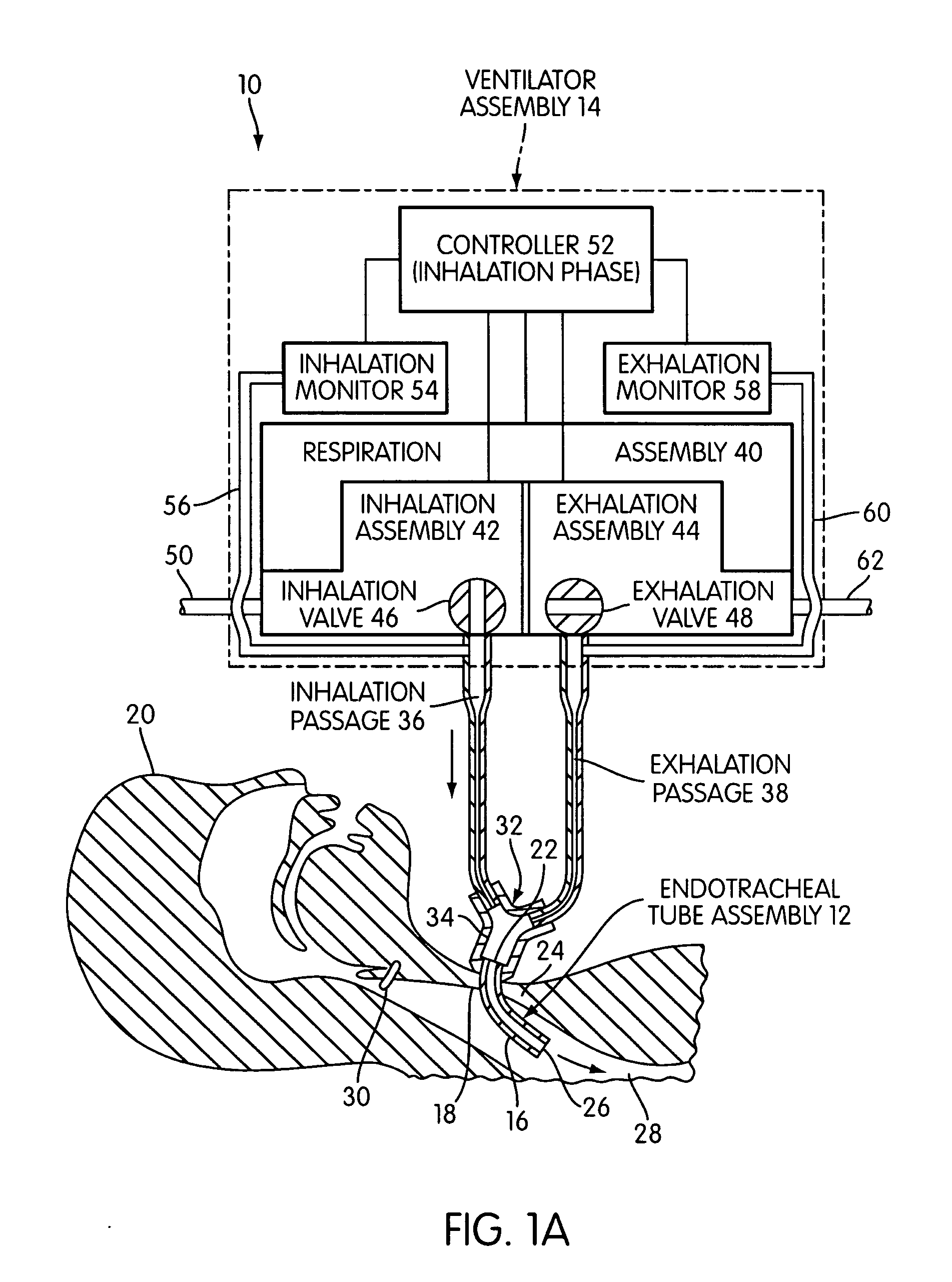Ventilating apparatus and method enabling a patient to talk with or without a trachostomy tube check valve
a technology of ventilating apparatus and patient, applied in the field of ventilating a patient, to achieve the effect of facilitating the patient's ability to speak
- Summary
- Abstract
- Description
- Claims
- Application Information
AI Technical Summary
Benefits of technology
Problems solved by technology
Method used
Image
Examples
Embodiment Construction
[0028]Referring now more particularly to FIGS. 1A, 1B, 2A, 2B, and 3 (or “FIGS. 1-3” for short) of the drawings, there is shown a ventilating apparatus, generally indicated at 10, embodying the principles of the present invention. Ventilating apparatus 10 includes, in general, an endotracheal tube assembly, generally indicated at 12, and a ventilator assembly, generally indicated at 14.
[0029]Endotracheal tube assembly 12 includes an endotracheal tube 16, constructed, for example, in accordance with the principles disclosed in the incorporated '356 patent. Endotracheal tube 16 is constructed and arranged to be mounted in a trachea 18 of a patient 20, as shown in FIGS. 1-3, so that an exterior open end 22 is suitably fixed in position exteriorly of the patient's neck 24 and an interior open end 26 communicates with the patient's airway and lungs 28 at a position below the patient's vocal cords 30.
[0030]In FIGS. 1-3, endotracheal tube 18 is shown as being devoid of a check valve, often...
PUM
 Login to View More
Login to View More Abstract
Description
Claims
Application Information
 Login to View More
Login to View More - R&D
- Intellectual Property
- Life Sciences
- Materials
- Tech Scout
- Unparalleled Data Quality
- Higher Quality Content
- 60% Fewer Hallucinations
Browse by: Latest US Patents, China's latest patents, Technical Efficacy Thesaurus, Application Domain, Technology Topic, Popular Technical Reports.
© 2025 PatSnap. All rights reserved.Legal|Privacy policy|Modern Slavery Act Transparency Statement|Sitemap|About US| Contact US: help@patsnap.com



